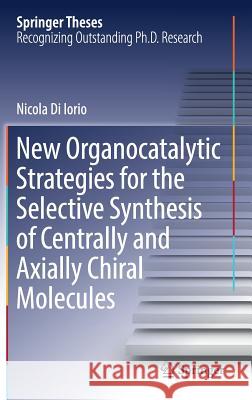New Organocatalytic Strategies for the Selective Synthesis of Centrally and Axially Chiral Molecules » książka
topmenu
New Organocatalytic Strategies for the Selective Synthesis of Centrally and Axially Chiral Molecules
ISBN-13: 9783319749136 / Angielski / Twarda / 2018 / 157 str.
Kategorie:
Kategorie BISAC:
Wydawca:
Springer
Seria wydawnicza:
Język:
Angielski
ISBN-13:
9783319749136
Rok wydania:
2018
Wydanie:
2018
Numer serii:
000416125
Ilość stron:
157
Waga:
0.44 kg
Wymiary:
23.5 x 15.5
Oprawa:
Twarda
Wolumenów:
01
Dodatkowe informacje:
Wydanie ilustrowane











